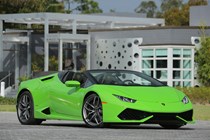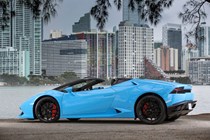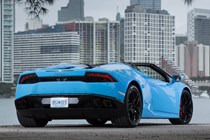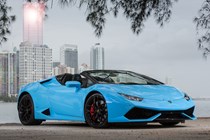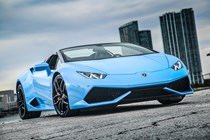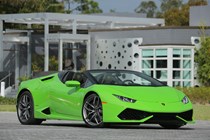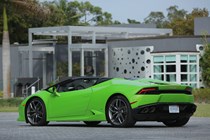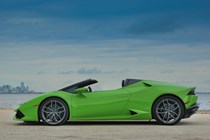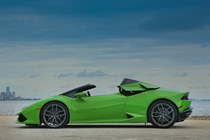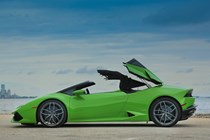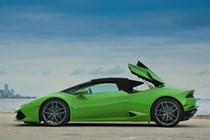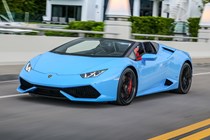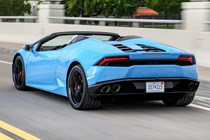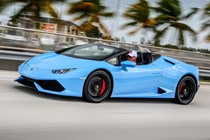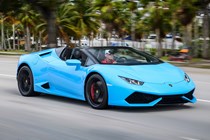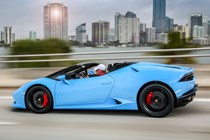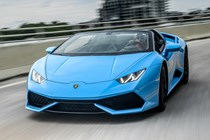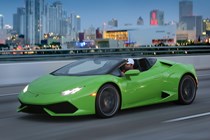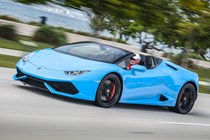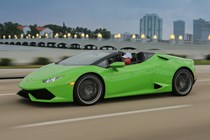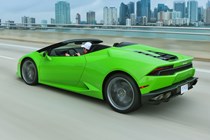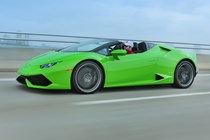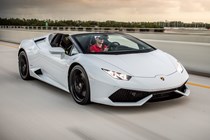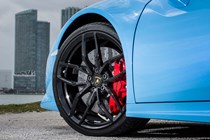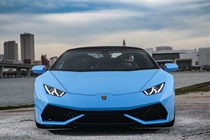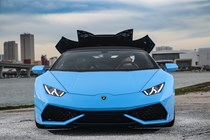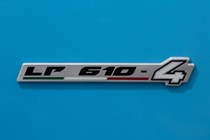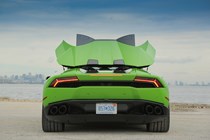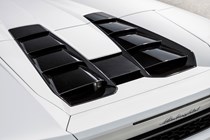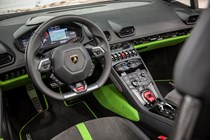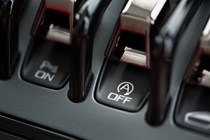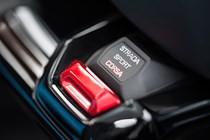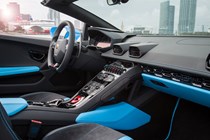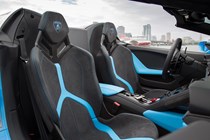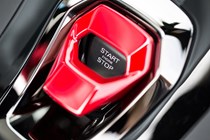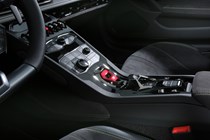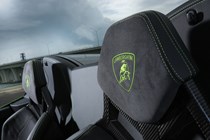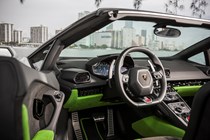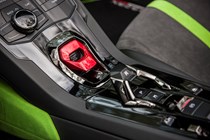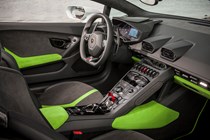
Lamborghini Huracan Spyder interior, tech and comfort

We’ve already raised the issue of visibility, seat travel and seat comfort, but if you’re prepared to tolerate or adapt to this, the rest of the interior is largely worth the effort.
Instead of a conventional gauge cluster, the Huracan features a digital screen with three display modes. While this is increasingly seen on Audis and other models, it is still likely to impress uninitiated passengers when you flip between dials, a giant digital map display and a mode that mixes both. Ensuring that a degree of familiarity is required from drivers, while the buttons to do this are mounted on the steering wheel, they aren’t clearly labelled and even require an extended press to access some functions. Owners will adapt in no time, but casual observers may be baffled. A small secondary screen on the centre console displays additional engine information or – when activated – the climate control settings.
Also on the steering wheel is the ‘Anima’ drive mode selection switch – a red rocker type control on the central wheel spoke – as well as buttons for the indicators, wipers and main headlight beam; there are no conventional stalks at all because Lamborghini fears they will interfere with gearshift paddles, which are mounted on the steering column instead of the back of the wheel. It takes some time to get used to this – especially the indicators – but you’ll find a similar setup in any modern Ferrari.
Elsewhere, the cabin is a striking blend of bespoke toggle switches and familiar Audi-style controls. The layout is reasonably logical, although the slot for CDs (remember those?) is between the seats on the rear bulkhead, which can require some dexterity. There’s a strong hexagonal theme throughout, and a wide range of colours available to accent everything for the seats to the dashboard.
We’ve not driven a Huracan on the standard ‘passive’ dampers, so can only comment on the optional ‘magneto-rheological’ variable system. While this is never exactly what you could call supple, the standard setting in the Strada driving mode delivers acceptable everyday comfort and never feels harsh or crashy. Crank the car up to Sport or Corsa and things get a lot firmer, but such is the impressive stiffness of the roofless Spyder’s carbon and aluminium structure that it still allows the suspension to work, refusing to vibrate or shudder except in the most extreme of circumstances.
With a three-layer roof construction, Lamborghini claims the Spyder offers the exact same level of refinement as the coupe when the roof is up. We detected a slight wind rustle around the rear screen but would otherwise agree – but that’s with the understanding that the Huracan coupe isn’t exactly the most refined vehicle anyway. Certainly the Ferrari 488 and McLaren 650S are more polished in this regard, but then they do have folding hardtops rather than soft-tops. Roof down Lamborghini has used a number of clever aerodynamic tweaks to keep buffeting to a minimum: slots on the ‘fins’ behind the cabin, clip-in mesh panels and an adjustable rear screen – lowering this last also allows you to hear the engine more when you’ve got the top up.
However, the conversion from Coupe to Convertible has resulted in some compromises. Not only is rear visibility severely restricted, especially when checking blindspots, seat travel is reduced. This may force taller drivers and passengers to adopt a more upright position. The seats themselves are also notoriously hard, which can be an issue on longer journeys.


